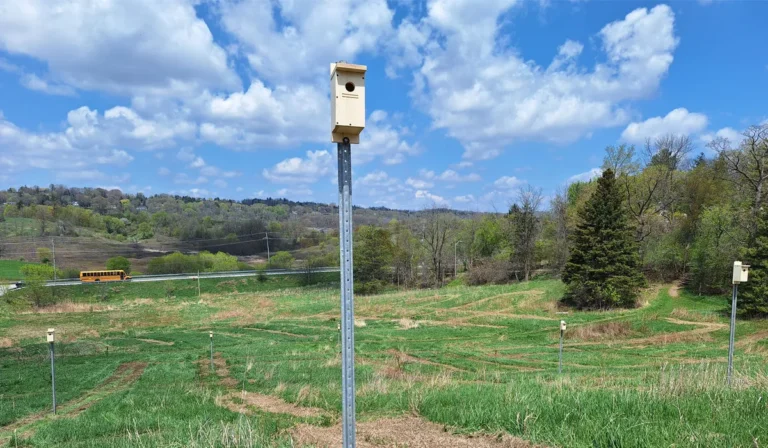Many people unknowingly decorate for the holidays with invasive plants, thinking they are making an eco-friendly choice by using natural materials. Understanding which invasive plants are commonly used, why they pose a problem, and how to dispose of them responsibly can help protect native species. Small changes in your holiday décor choices can make a big difference for the environment!
Common Invasive Plants Found in Holiday Decorations
Oriental Bittersweet (aka Asiatic/Asian bittersweet, round-leaved bittersweet, Oriental staff vine)
This climbing woody vine has bright red-orange berries that grow in groups of two to three along its stem. The berries emerge from yellow-orange capsules that split open later in the year. Commonly used in wreathes, the berries can be spread during harvesting, by birds eating the berries off the wreath, or during disposal after the holidays.
Winter Creeper (aka climbing euonymus, fortune’s spindle)
This evergreen woody shrub/vine has dark green, green-white, or green-yellow variegated egg-shaped leaves arranged in pairs along its stem. It can grow as a shrub but will climb like a vine if given support. Winter creeper’s fruit is found in clusters of white-tan coloured capsules that split open to reveal red-orange berries. Often used in wreaths and garlands, its seeds spread easily through improper collection, use, or disposal.
Miscanthus (aka Chinese Silver Grass, maiden grass, eulalia)
Miscanthus varieties grass grows in dense clumps and has fluffy white-tan seed heads in the fall and winter. The seed heads typically reach 1–2 metres, but giant varieties can grow even taller – up to 4 metres or more. Miscanthus is often used in vases or floral arrangements, but its seeds spread very easily, allowing it to take over new areas.
Teasel Varieties (cut-leaf teasel and common teasel)
This 1-2.5 metre tall prickled stem plant can have and spiked, cylindrical seed heads. The seed heads are brown in fall and winter and have long spikes emerging in every direction. They are often used in vase arrangements, and sometimes even spray-painted for decoration. Teasel produces thousands of seeds per plant, which are very successful at spreading and growing. Transporting the seed heads can unintentionally cause teasel to invade and quickly take over new areas.
Native Alternatives for Holiday Decorations
Two commonly used native plants, Red osier dogwood and Paper birch, are better choices since they don’t pose a risk of spreading. While these are not invasive, meaning spread is not a concern, these plants provide valuable habitat and food for other native plants and organisms and should not be removed from the natural areas. Head to your local nursery to get these species, or some cedar and pine boughs as a sustainable alternative.
Proper Disposal of Decorations Containing Invasive Plants
If you already have decorations made with invasive plants, dispose of them responsibly. Place the plant material in a dark plastic garbage bag and put it in the garbage—not in compost or yard waste. Seeds can survive and spread if placed in compost, causing future problems.
By choosing decorations wisely and disposing of them carefully, you can help protect native species and slow the spread of invasive plants!
Photo Sources and References
Oriental Bittersweet Fruit – Patapsco
Oriental Bittersweet Wreath – Massachusetts Introduced Plant Outreach Project
Climbing Euonymus (Green and Yellow Variety) – Randy Harter on NC State University
Climbing Euonymus Fruit – Plantsam
Miscanthus Clusters – John Hagstrom on Morton Arboretum
Miscanthus Seed Heads – soliff on iNaturalist
Teasel Seed Head – Springwater Trails
Teasel Wreath – JPs Life and Loves













